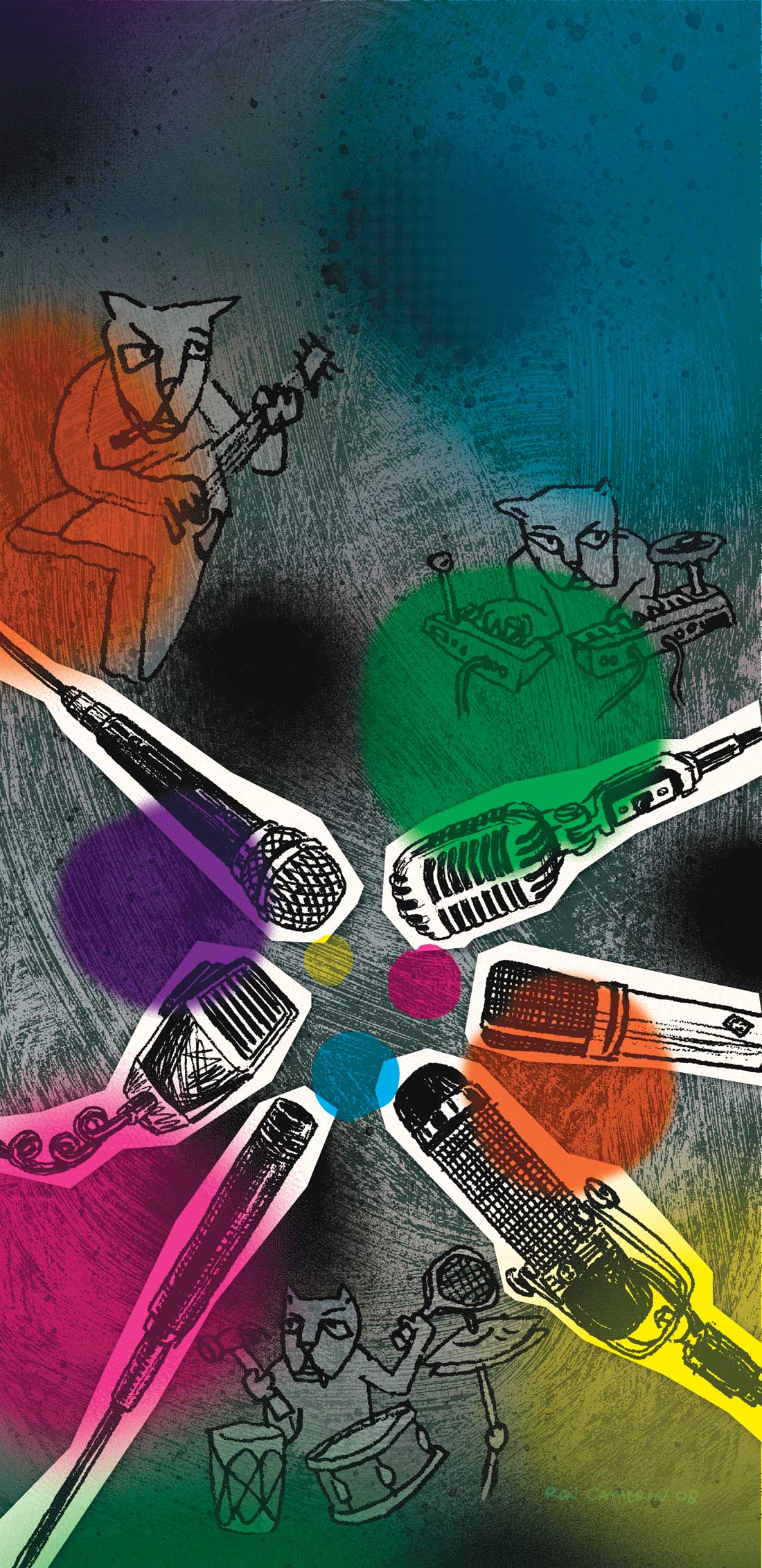It used to be that using a soft synth really felt like a compromise. Even with the best emulations, it's always been hard not to think that if you could get your hands on the "real thing" it would just sound better, be a better experience, sit easier in the track, and be easier to mix. Arturia's software versions of classic synths have done a lot to blur the software/hardware line, but up until now, I've never really been a real fan of soft synths. I'd just rather plug in any old cranky piece of hardware and let it rip than suffer the stale 2D high end that most soft synths have.
Arturia's emulations seem to come closer than most, but always left me wanting more as I thought they sounded a little cold and stiff most of the time. Their Minimoog would never convince me that the real thing couldn't just sonically blow it out of the water. The real ARP 2600 living in The Hangar control room just always sounded way more appropriately out-of-control, and Arturia's filter emulations just never did it for me. The Jupiter 8V, however, feels like a different beast. I found it incredibly useful and "alive" sounding. It saw a ton of use at my studio, more so than any other soft synth has, Reason included. It ruled on basses and soft evolving pads, grindy organs, and percussive beatbox sounds. Installation was easy but required a Syncrosoft key, which was a bummer, but so be it. You have to live in this world. It's definitely my favorite Arturia synth.
Avid readers of Tape Op reviews will be familiar with the criticisms of Arturia's CPU-hungry architecture really limiting the usefulness of their products. I primarily use Pro Tools LE on Mac OS X at home, and when loading Jupiter, I experienced the same sort of issues described in these pages before. Horrible performance, CPU slowing to a crawl with just one instance of Jupiter in use, slow redraw, and occasional audio dropouts. Bringing up the Jupiter Editor interface froze the normal Pro Tools transport functions, forcing me to use the Digi 002 transport for play and stop instead of the spacebar. Worse yet, most real-time Jupiter tweaks would cause my Dual 2.4 GHz MacBook Pro to freeze. It sounded promising, but Jupiter was nearly unusable. In the end, I would firmly place blame at Digidesign's feet. According to Arturia's website, Arturia is working with Digidesign to remedy the situation. In the meantime, the posted workaround is to set the number of RTAS processors in the Pro Tools Playback Engine to 1. I had recently downloaded the demo of Ableton Live, and when switching to Live on the same machine, I was able to run three simultaneous instances of Jupiter with no problem at all and no glitches whatsoever. That's when things really got fun. Programming was a breeze, and assigning MIDI control over the filters allowed me to voice chords and melodies with ease. In Pro Tools, this was just a complete drag and killed working with Jupiter creatively. Used as an Audio Unit, Jupiter worked flawlessly for me. Arturia crams a ton of extras into their synths, and I absolutely love Arturia's X/Y modulation grid that makes complex modulations easy to generate. Just a little bit of its quasi-randomness can bring a subtle instability to sounds. I wish this kind of modulation was available on every synth that I use!
Arturia Jupiter 8V sounds fantastically 3D with the beautiful, rich low end and the famously buzzy quality expected of older Roland oscillators. The filters stay rich and sweet as they close down, my gold standard for how any synth sounds. I found Jupiter easy to blend with acoustic instruments in a way that never felt like I was "flattening" the mix. I've heard some complaints about the oscillator cross-modulation not sounding as good as the original Jupiter, but I didn't experience any of the phase cancellation that happens due to the random start-point of the oscillator waveforms retriggering as undesirable. I think that might be because most of the time I'm using cross-modulation, I'm trying to make the sound more complex and unstable sounding. I admit it; I just like it when things sound a bit broken.
Does Jupiter 8V sound like the real thing? My experience with the original is limited to a few sessions that I've done here and there, but it definitely "feels" right in that Roland kind of way. I certainly started using my Juno-106 less. I know that I really like this soft synth much more than I've liked others, and it sits really well with other tracks that I've done with the numerous other analog synths that are here in my space. ($179 street; www.arturia.com)
Tape Op is a bi-monthly magazine devoted to the art of record making.




_disp_horizontal_bw.jpg)